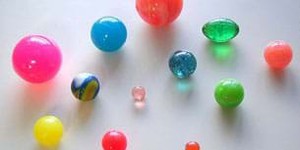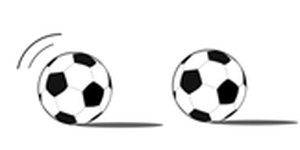Lesson Plans (5 results)
Free science lesson plans designed to engage students through hands-on experiments and activities. Chemistry, life sciences, physics, engineering and more, for elementary, middle and high school teachers.
|
Select a resource
Sort by
|
Lesson Plan
Grade: 9th-12th
1 review
Teach your students about the engineering design process with this fun lesson plan. They will design and build two "volleyball machines" that launch a ping pong ball back and forth over a net. While the
2019 Engineering Challenge is over, your students can still try this project and compare their scores to top scores from around the world! Teachers, note that elementary school and middle school versions of this lesson plan are also available.
Looking for this year's challenge? Check out…
Read more
NGSS Performance Expectations:
Lesson Plan
Grade: 6th-8th
Teach your students about the engineering design process with this fun lesson plan. They will design and build two "volleyball machines" that launch a ping pong ball back and forth over a net. While the 2019 Engineering Challenge
is over, your students can still try this project and compare their scores to top scores from around the world! Teachers, note that elementary school and high school versions of this lesson plan are also available.
Looking for this year's challenge? Check out our…
Read more
NGSS Performance Expectations:
New
Lesson Plan
Grade: 6th-9th
In this lesson plan, students will model the complex biologic manufacturing process. First, they will model the cellular expansion process that occurs in a bioreactor. Then, students will lyse the cells to isolate the proteins from the dyed cell debris. Lastly, they will model the advanced filtration process to purify proteins so they can be used as medicines.
Read more
NGSS Performance Expectations:
Lesson Plan
Grade: 3rd-5th
Teach your students about the engineering design process with this fun lesson plan. They will design and build two "volleyball machines" that launch a ping pong ball back and forth over a net. While the
2019 Engineering Challenge is over, your students can still try this project and compare their scores to top scores from around the world!
Teachers, note that middle school and high school versions of this lesson plan are also available.
Looking for this year's challenge? Check out our…
Read more
NGSS Performance Expectations:
Lesson Plan
Grade: Kindergarten-5th
Students determine the coefficient of restitution (or the elasticity) for super balls. Working in pairs, they drop balls from a meter height and determine how high they bounce. They measure, record and repeat the process to gather data to calculate average bounce heights and coefficients of elasticity. Then they extrapolate to determine the height the ball would bounce if dropped from much higher heights.Engineering Connection
Mechanical engineers select materials that…
Read more
NGSS Performance Expectations:
Lesson Plan
Grade: Kindergarten
Experimenting with balls is fun! In this hands-on lesson, you and your students will make them collide and study how balls can push each-other and people too! While exploring, students will also feel how pushing a light ball is different from pushing a heavier ball. Weight is important.
This lesson fits well together with a lesson where students push balls to discover how people use pushes and pulls to change motion.
Read more
NGSS Performance Expectations:
|










